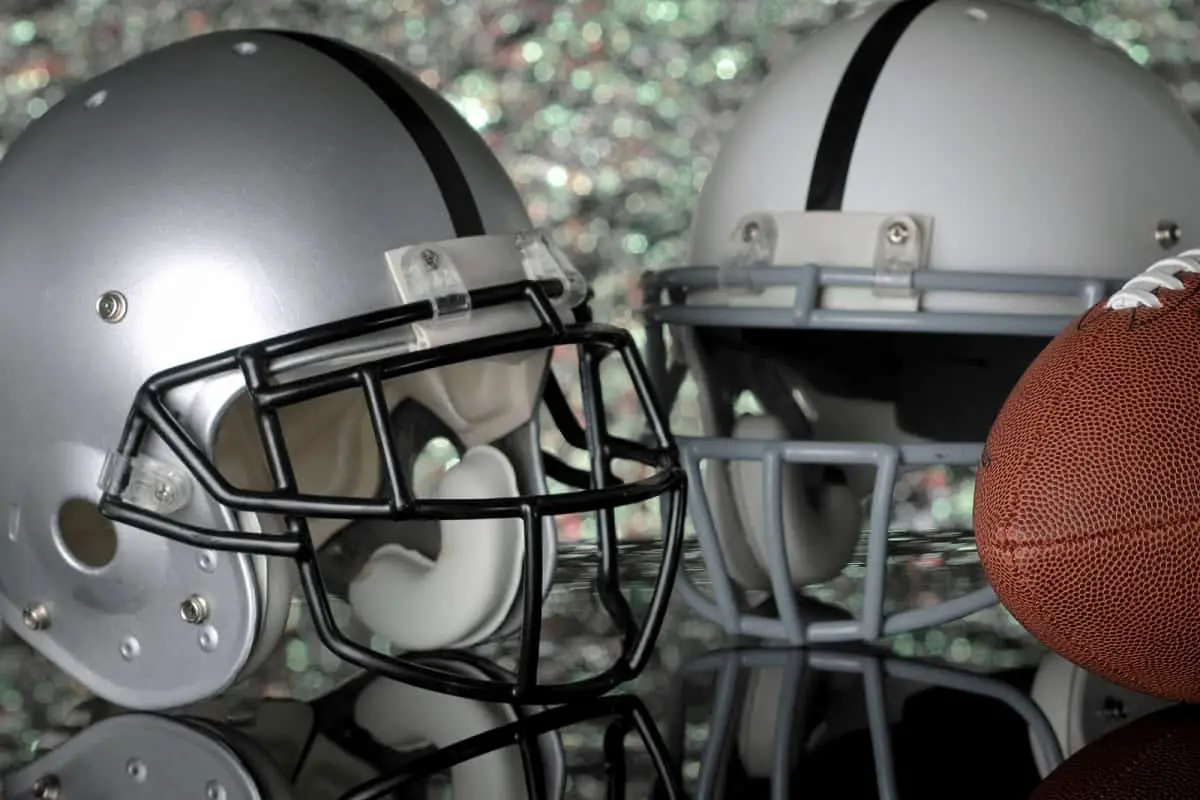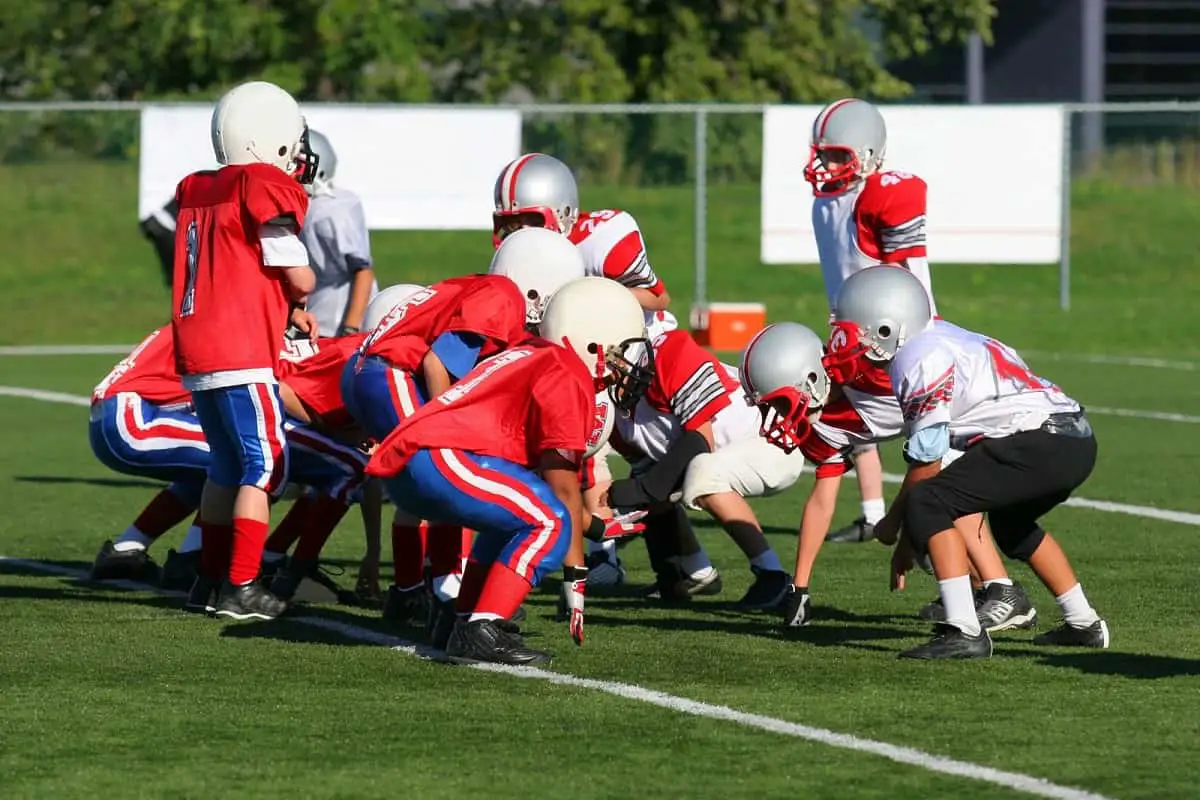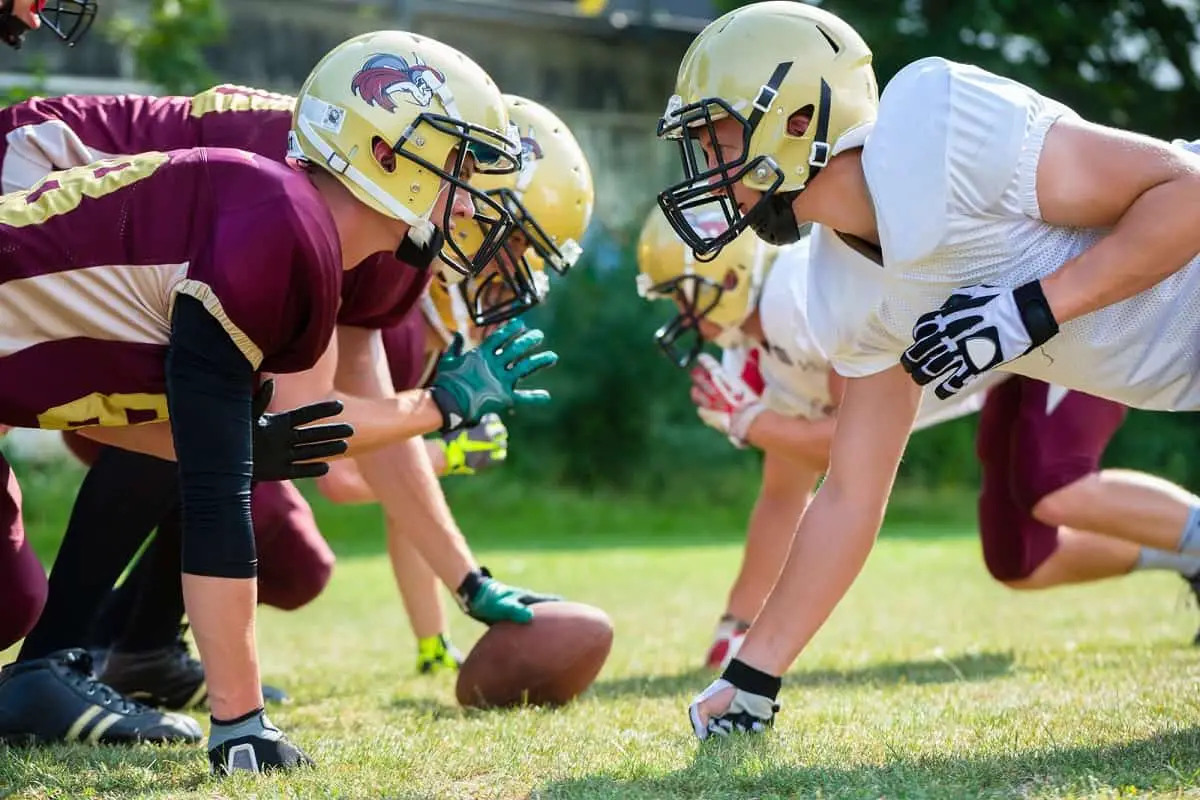How To Make A Football Helmet Fit Better
Making sure a football helmet fits properly is very important to maximize safety, so we’re going to look at how to fit a football helmet and some top football helmet fitting techniques.
This will help you get it right every time, making sure your head stays safe when playing football.
The question of ‘how to make a football helmet fit better’ isn’t necessarily difficult, however, there are certain things that need to be done in order to achieve a proper fit.
Football helmets need to fit snugly, with minimal space between the padding and the player’s head. It should not press or pinch in any particular places or feel uncomfortable against the player’s pressure points.
Page Content

Disclosure: As an Avantlink and Amazon Associate, we earn from qualifying purchases. Disclosure Statement.
How Should A Football Helmet Fit
Football helmets need to fit snugly, with minimal space between the padding and the player’s head. It should not press or pinch in any particular places or feel uncomfortable against the player’s pressure points.
The best way to start to get a proper fit for a football helmet is to begin with a helmet that is the right size for your head. The wrong size helmet isn’t going to miraculously fit any better later on, so best to start with a helmet that is actually the right size from the start.
How To Measure For A Football Helmet
You should start your football helmet fitting by measuring around your head with the tape measure approximately an inch above your eyebrows. Wrap it around the widest part of your head just above your ears.
Take the measurement and then check the helmet sizing chart from the manufacturer that makes the helmet for the size that corresponds with your head size.

How To Fit A Football Helmet
Below are the steps to follow to help you with your football helmet fitting.
- Step One: Pull the chin cup toward the face mask and then pull the helmet over your head. The front edge should sit just above your eyebrows. Pull the lower chin straps away until the cup slips up to rest against your chin. The suspension system will fit itself snugly around your head.
- Step Two: Secure the lower strap by sliding the buckles along the chin strap and then snapping the buckle into position on the lower outside of the helmet. The strap should be comfortable beneath your chin but not loose.
- Step Three: Secure the upper straps by pulling the chin straps upwards and settling the chin cup beneath your chin. For both upper straps, adjust the buckles until the straps can be snapped into place on the upper sides of the helmet. Once more, there should be no slack in the straps when they are in place.
- Step Four: Gently twist and rock the helmet. There should be only a small amount of movement. Shake your head sharply from side to side and see if the helmet wobbles excessively. If it does, adjust the chin straps further until it is fitted.
- Step Five: Some helmet manufacturers recommend locking the strap in place by sliding the end of the chin strap back through the second slots of the buckles so that the strap will stay in place once the helmet is removed. This saves you from having to adjust the helmet every time you put it on or off.
- Step Six: Unbuckle the straps and pull the chin cup up toward the face mask so that you can lift the helmet off your head. It should now be fitted such that you can take it on and off as needed.
Remember to check the fit of the helmet every so often to make sure that nothing has slipped and that your head is still well protected.

How To Make A Football Helmet Fit Better
Now that you have your football helmet snug and secure on your head, there are some things that you need to check to complete your football helmet fitting.
You should be able to see your brow line at the front, and the ear holes in the helmet’s molding should line up with your own ears. If you place your finger just above the eyebrow, you’ll be able to see the exact level that the helmet should sit.
Check that the bone at the base of the skull at the back of your head is covered by the helmet. Next, try gently pulling the helmet down toward your nose. If the helmet moves and is loose, it isn’t fitted properly on your head and won’t keep you safe on the field.
A helmet should never come off without the straps being undone. It is a good idea to check the helmet’s straps haven’t stretched or moved during play, especially when a helmet is new because some new straps can stretch a little when they are first worn.
This content was originally published on headsdontbounce.com. If it appears on another website, it is a violation of the copyright owned by headsdontbounce.com.
Maintaining Proper Football Helmet Fit
It is very important for you to constantly keep tabs on the fit of your helmet. Some seemingly small things can change how well your helmet fits. For example:
- During your teenage years, your head can grow making your helmet too tight.
- Having your long hair cut short can make your helmet become too loose.
You also need to regularly check the condition of your helmet, especially if you’ve been involved in a heavy impact. A damaged helmet cannot protect your head properly. Get a new helmet.
Conclusion
You should now have the answer to the question of how to make a football helmet fit better. Spend some time getting it right when choosing and trying on a helmet.
And, be sure to remember to evaluate the fit every few months to make sure that your helmet remains steady on your head while being snug and comfortable.
Related Reads:

